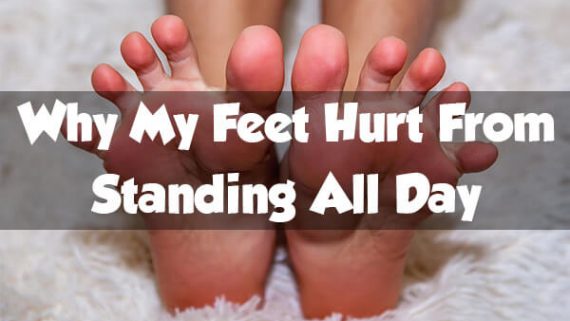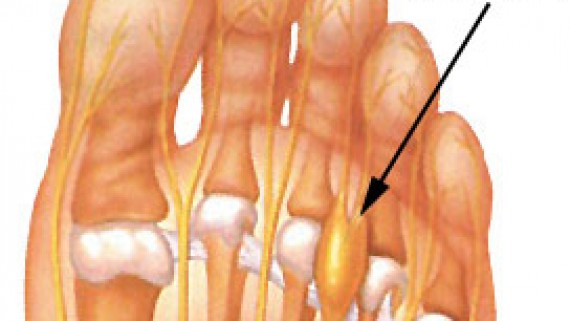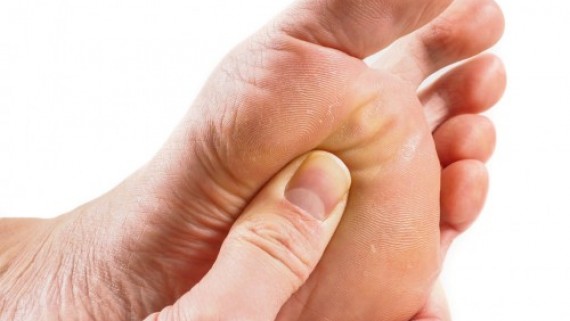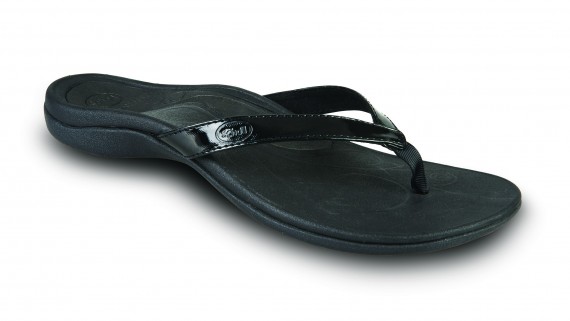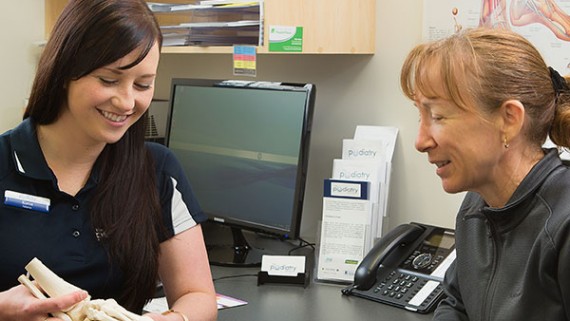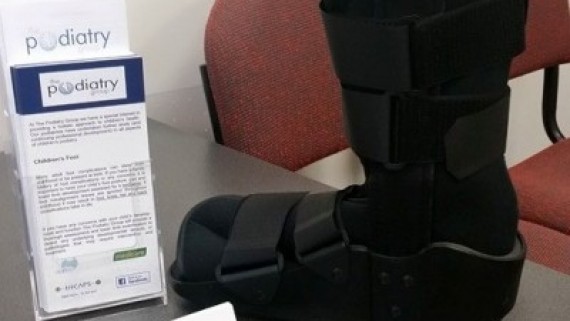- Strict waiting room limits apply – we ask that ALL patient now call us from the car park on arrival, stay in your car, and we will return your call when it’s time to come inside
- Sanitisation stations remain in the clinic, and their use is a condition of entry to the practice
- Podiatrists will continue to be wearing masks, gloves and gowns during appointment times
And finally, once again, it is important to continue to follow the rules for testing and/or isolation should you have come into contact with someone confirmed or suspected of carrying the virus, or are suffering any upper respiratory symptoms. If you are unwell, please reschedule your appointment and we’ll look forward to seeing you back in the clinic once you’re able.
We ask that you take special caution when returning from overseas travel to high-risk areas and ask that you contact us to reschedule your appointment if you suffer cold/flu-like symptoms or have visited a high-risk country within the last 14 days.
If you need to contact us or have any queries or concerns please feel free to phone our clinic on 1300 847 226.
We’d like to take this opportunity to thank you for your support and your trust in us for all your podiatry care.
The Podiatry Group
There are many ways to make a living and for some of us it involves long periods of standing. In particular, jobs that require us to stand all day place an undue stress on our feet, legs, knees, and hips- Did someone say retail worker?
The main problem with standing for long periods of time is that you are placing a large amount of stress on the same muscle groups, ligaments and bones. This is why you can experience pain.
We are all probably a little guilty of fantasizing about quitting our jobs and finally chasing our dream career of becoming a travel show host for Getaway. But we better take a look at a few ways we can reduce pain in the feet, just in case that falls through.
Keeping good foot health while standing will require you to be proactive and take steps towards achieving more cushioning and support during your day to day work.
The last thing anyone wants is an injury that prevents you from working and therefore impacts your income. To the same degree none of us want to work with foot or leg pain either!
To help make it easier, let’s take a moment to answer the question of why my feet hurt from standing all day? And what we can do to help.
Why Do My Feet Hurt From Standing All Day?
People are meant to stand. The reason why it can be challenging and why our feet hurt is that we may not be ready for it without some planning. Many people changing to a more active job will find that pain in their feet occurs pretty quickly after starting. Some of this pain will go away naturally as your body gets accustomed to it. If the pain persists, then it may have something do with your shoes or your foot type.
Sometimes the surfaces that we work on can be a little unforgiving on our joints. Man-made surfaces like concrete and tiles don’t allow for much shock absorption and therefore our joints take all the load. This is where the right pair of shoes can help.
The lifespan of a pair of shoes will change dramatically based on what brand and style of shoe you are wearing. As well as how often you are wearing them and how many kilometres you do in a day.
Wearing the right shoes can dramatically reduce the amount of pain you feel from standing all day. Also, consider how long your shoe is meant to last. As the shoe breaks down from use, it will provide less and less cushion for your body, resulting in experiencing more discomfort.
It is important that you wear the right shoe for your foot type. Just because you spent $200 on a pair of shoes does not necessarily mean they are more supportive or that they are right for you!
The best way to make sure you are getting the right shoe is to book an appointment with one of our shoe addicted podiatrists to have your walking pattern assessed. We can then recommend the right shoe for you before you invest your money into the wrong one!
The bottom line
Don’t put up with unnecessary pain. We are here to help you and will work with you to meet the specific needs of your feet and job.
Call us on 1300 847 226 to make an appointment and give us the time to help you.
Ankle sprains are one of the most common leg injuries that podiatrists treat every day. You can twist an ankle during sport, at work or just minding your own business at home. Whether you have twisted an ankle for the first time or the 10th time, it is a good idea to book an appointment with your podiatrist.
We can help you from start to finish. From a thorough assessment of the damage to the ankle to getting you back on your feet and doing what you love best.
Assessment of ankle sprains is very important, as there may be very little damage to the structures in the ankle or there can be a complicated bone fracture requiring urgent attention. For this reason, your podiatrist may need to refer you for ultrasound or x-ray imaging. Depending on the severity, we may cast the ankle or fit you with a moonboot. If the sprain is minor, a good supportive pair of runners may be recommended.
Once an ankle sprain is healed, a rehabilitation program is key to getting back to your activities and preventing ankle injuries in the future. Your podiatrist will develop a customised strengthening program to improve your balance and ankle strength and monitor your progress on a regular basis.
Don’t let that ankle sprain keep you down, book an appointment with The Podiatry Group on 1300 847 226.
As the clouds (eventually) start to clear we are reminded that Spring is upon us. It’s time to dust off those runners, get outside and start enjoying a bit of sunshine. If your runners are looking a little bit too dusty or your feet are feeling sore or fatigued when wearing them, it may be time for an update.
At The Podiatry Group, we can perform a biomechanical assessment of your feet. We look at your foot posture and your gait (the way you walk) to determine which type of runner would suit you best. Many people aren’t aware that runners should be replaced every 6-12 months if you have a relatively active lifestyle. The reason for this is that the structure of the shoe wears away over time and use, and the foam of the shoe compresses. A new pair of runners is often all you need to get that spring back in your step.
If you have got supportive footwear already but do find your feet and legs feel sore or fatigued, our assessment can help determine other factors that might be contributing to your pain. We can look at your activity levels and training/work surfaces to build an exercise plan that works for you.
Our management plan may also include a stretching and strengthening plan, activity modification, foot orthotics and ongoing regular assessments to make sure everything is running smoothly- the same way we want you to run!
Book and appointment with us online or call us on 1300 847 226.
What is a Morton’s neuroma?
How did I get this?
If I had a Morton’s neuroma, what would it feel like?
What do I do next?
- Ice to the area
- Again ladies – avoid high heels!
- Check the width of your footwear. Try wearing wider shoes with a lower heel. Tighter or narrow footwear can compress and bunch the toes together. Your podiatrist can help you with footwear assessment and recommendations.
The exact cause of Morton’s neuroma can be different between patients. An accurate diagnosis can be made by a podiatrist.
- You may require orthotics to alleviate the forefoot pressure and mechanics in combination with metatarsal padding.
- Additional, ultrasound imaging maybe required to consider other diagnostic possibilities (as mentioned in first post).
- In more serve cases a course of anaesthetic and cortisone injections.
- Surgical removal of the neuroma as last resort.
Don’t forget, a neuroma is a result of a nerve that is being traumatised by a poorly functioning foot or footwear and treating the cause of this condition is paramount.
Metatarsalgia – Ball of Foot Pain
So many foot problems can occur in our forefoot. As podiatrists we treat a wide range of problems associated with forefoot pain and deformity. Metatarsalgia is a non-specific term or general umbrella term if you will, for pain in the forefoot or ball of the foot.
Discomfort is usually located beneath the balls of our feet and is typically a result of increased forefoot pressure.
Bunions, hammertoes, short metatarsal bones, stress fractures, plantar plate disruption, Freiberg’s infarction, capsulitis, intermetatarsal bursitis and Morton’s neuroma area some possible causes of metatarsalgia.
Today we are talking about intermetatarsal bursitis.
Intermetatarsal bursitis
What is bursitis?
An inflammation or irritation of the bursa. A bursa is a small fluid-filled sac that provides cushioning and reduces friction, between and around the joints of the forefoot. Irritation of the bursa can cause swelling and pain (bursitis). The intermetatarsal bursae are located on the bottom of the foot near the base of the toes.
Bursitis can also affect other parts of the body – back of the heel/Achilles tendon, the knee, hip, shoulder and elbow.
How did I get this?
Generally, bursitis can occur through injury or repetitive motion causing irritation and inflammation. They can become irritated when one metatarsal bone takes more load than others.
Wearing narrow or excessively worn footwear during the day and different sporting activities can increase your chance of developing bursitis. Other factors can include;
- Overuse or excessive pressure on the forefoot
- Stress from abnormal foot mechanics
- Injury from a fall or hit to the area
- Less commonly due to certain types of arthritis; rheumatoid arthritis, gout, psoriatic arthritis
If I had bursitis, what would it feel like?
Friction can cause the space between the tendon, bone and skin to become inflamed – causing swelling, pain and possibly redness of the surrounding area.
Irritation and restricted movement of the affected joint may be evident and certain footwear or activities may exacerbate pain.
What do I do next?
- Apply ice to the area – this can help reduce inflammation
- Rest and avoid painful activities
- Non-steroidal anti-inflammatories if advised by your pharmacist
- Orthotics
- Footwear changes, avoid high heels!
- Reduce the amount of pressure being place placed on the bursa through off loading
- In chronic cases, injections of local anaesthetic and corticosteroid may be required in combination with padding
It’s important to attend a podiatry consult for assessment to determine the root cause, as other injuries can produce similar symptoms. Podiatrist may advise you on appropriate shoes and can also add padding to off load the pressure, prescribe orthotics and refer for any imaging that may be needed to rule out other conditions.
Contact us on 1300 847 226 or make an appointment online to speak with one of our friendly podiatrists about helping you get back on your feet sooner!
Welcome To The Team!
Welcome to the newest member of our podiatry team: Tanya Contis.
Tanya grew up in country Victoria, and graduated from La Trobe University with a Bachelor of Podiatry. Since then she has been growing her career in private practice and enjoys working across all areas of Podiatry, in particular general podiatric care, diabetic foot management and prevention, injuries and paediatrics.
Tanya takes a very holistic approach to foot care, acknowledging that happy feet go foot in foot with a healthy you.
For a number of years, Tanya worked in a technical footwear store run by podiatrists and has a strong appreciation for and extensive knowledge in footwear fitting and footwear education.
When Tanya is not in clinic, her own feet are leading her far and wide, down many European cobble-stone streets and up many beautiful mountain sides of New Zealand and beyond.
To book an appointment with Tanya or one of our friendly podiatrists please click here.
Summer Footwear
During an Australian Summer it is very clear that everybody’s favourite summer footwear are thongs. They are so easy to slip on, don’t require any bending down to put on or fiddling with any laces. Throughout history there has been a war between thongs and Podiatrists; thongs have typically been flat pieces of rubber that offer no support and by the end of the day have everyone begging for a foot massage. Well, no more! The War has finally ended and I am happy to say that both sides have won.
There are thongs that now offer arch support. You can walk around all day without the same discomfort you used to have from your old pair of thongs. The best part is that they are stylish as well as comfortable. Come into our Warragul clinic to check them out.
Lynette Stokie
Your Freindly Neighbourhood Podiatrist
Now Hiring- Podiatry Position Available
The Podiatry Group have a part-time Podiatry position available.
Join our team of podiatrists and work in a fun and supported environment! We operate over 3 sites spanning from the South Eastern Suburbs to Gippsland. We are seeking a motivated podiatrist who is interested in working in private practice with a strong focus on biomechanics, paediatrics and general/diabetes care. You must be reliable, motivated and have a positive attitude. We are offering part time initially with the opportunity to expand to full time. We offer professional development and mentoring. You must be willing to travel across multiple sites. If you are a new graduate looking for an exciting career in podiatry then contact us now.
Contact us on (03) 5624 3880 or email your CV to admin@thepodiatrygroup.com.au
Cam Walkers/Moon Boots
A Cam Walker is designed to help injuries heal, these can include soft tissue and bony injuries. The Podiatry Group have qualified Podiatrists specifically trained to fit Cam Walkers/Moon Boots. We are able to offer same day fitting at our Warragul, Drouin and Cranbourne Podiatry Clinics, this way you will be able to begin the healing process sooner.
The benefit of a CAM Walker is that unlike a plaster cast, it can be removed at night when going to bed or showering. This is helpful as it can allow for some non-weightbearing movement at the ankle joint which reduces the risk of the joint becoming really stiff after prolonged periods in the boot. This also makes rehabilitation easier after the boot is finally removed.
A CAM Walker is mostly used without any other form of support like crutches. However, there are some injuries at the initial stages that will require a patient to use crutches in addition to a CAM Walker. We are able to fit you with crutches if the need arises.
Some injuries that may require the use of a CAM Walker include:
- Fractures
- Achilles Tear/Rupture
- Plantar Fasica Tear
- Stress Fractures
- many more…
Most private health funds provide rebates for CAM Walkers/Moon Boots when supplied and fitted by our podiatrists.
If you require a Cam Walker/Moon Boot or would like any more information feel free to contact us at our Warragul, Drouin or Cranbourne Podiatry Clinics.

